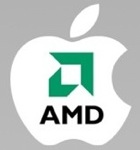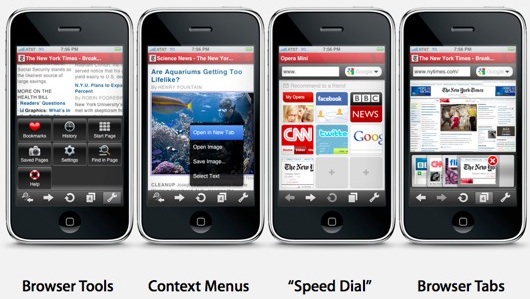Android and Linux Kernel on 'Talking Terms' Again
Linux enthusiasts have been keen to declare ‘the year of the Linux desktop’ every year for almost a decade now. But, while Linux offerings for the PC are as robust as they’ve ever been, in terms of market share the penguin hasn’t made much progress. That’s a completely different story on mobile devices, specifically mobile phones. Thanks to the success of Android in particular, Linux now has a significant market share on the mobile front, 25 percent of the smartphone market, and it’s growing at a healthy pace.
Yet, Android and Linux have had somewhat of a tense relationship for a while now spurred by a lack of communication and collaboration between the Linux kernel team and Google engineers. Things are looking up, though, and it seems like the two sides are, at least, talking again. The Linux Collaboration Summit is now underway in San Francisco and kernel developers are due to meet with Android representatives, hopefully to find a way to settle their differences.
The tensions arose from the Linux kernel team’s frustration with Google’s, apparent or real, lack of interest in sharing their progress. Google loves open source, but its method of development doesn’t coincide with the established open-source cannons. When Google starts a project it usually keeps its work behind closed doors for a period to facilitate a fast development cycle. It does this for open-source projects as well, it did with Android, it did it with Chrome and it did it with Chrome OS.
Google says this helps it focus on developing its product until it is ready to share it with the world. Google eventually shares the sources for all of its projects which incorporate other open-source code. The Chromium project, on which Google Chrome is based, is fully supported, for example.
But this lack of initial cooperation and general lack of communication has caused tension with the open source community, leading to the Android drivers to be removed from the Linux kernel early this year. The kernel team hoped that the move would be a wake-up call for Android developers, but the plan hasn’t really worked out. Google has continued focused development of its own kernel flavour, for which it offers the code under an open-source license, undeterred.
Now, the two groups are finally talking again. That doesn’t necessarily mean that Android code will be welcome back into the main Linux kernel any time soon. In fact, Google’s open source Programs Manager Chris DiBona says it may be a "multi-year" process. But he also says that, technically, this shouldn’t be much of a problem as Google engineers have tried to stay as true to the original kernel sources as possible. Political differences aside, it’s clear that Android is a big driving force for Linux so a solution should emerge one way or another at some point.
Apple in 'advanced discussions' to adopt AMD chips

Apple is in “advanced discussions” with AMD to adopt its microprocessors for some of the company’s forthcoming products, according to a report.
If true, it could be a surprising turn of events for the company, which has used Intel chips exclusively in its Mac computers for the last four years.
There are two reasons Apple would show interest in AMD, according to the report:
- Apple wants to increase its flexibility and broaden its competitive options
- Apple has encountered problems with Intel, such as limited availability of new processors and new chipset designs that make it difficult for Apple to use Nvidia graphics.
Historically, Apple was interested in Intel’s Core family of CPUs, but the company’s products come at a premium over those of AMD. Naturally, Apple could also leverage AMD’s ownership of Nvidia rival ATI to offer an integrated solution in its future Macs.
But the news also comes on the heels of Apple’s announcement of its own A4 ARM system-on-a-chip in the iPad. The question is whether the Cupertino, Calif.-based company wants to develop customized x64 chips for its Macs — a competitive advantage for sure.
Then again, talk is cheap, and Apple could be talking to AMD just to rile rival Intel, the same way its spoken with rival Microsoft about using Bing search over Google.
HP launches plug and play printers; Shuffles enterprise execs
Hewlett-Packard is promising that you won’t have to worry about CDs or drivers to install a printer.
The company’s HP LaserJet Pro line features “printing in as little as two minutes” by connecting a USB cable to any laptop, PC or netbook. HP calls this easy installation Smart Install, but you really have to wonder what took so long. Printers should have always just worked with anything with a USB port.

HP said the printers that feature easy installation include the HP LaserJet Pro P1100 series, the HP LaserJet Pro M1130/M1210 multifunction printer and the HP LaserJet Pro P1566/P1606dn. These printers, which turn themselves off when not in use, are aimed at small and mid-sized businesses. Prices range from $129 to $229. HP also rolled out a mobile scanner to scan documents in the field.
Separately, HP reshuffled executives in its enterprise business. The company appointed Thomas Hogan as executive vice president of sales, marketing and strategy for HP’s enterprise business. Hogan used to lead HP’s software group.
Among other moves:
- Francesco Serafini will become executive vice president of HP’s emerging markets unit. Serafini was the president and managing director of HP Europe, Middle East and Africa (EMEA).
- Jan Zakak will take over for Serafini in HP EMEA.
- Richard Geraffo Jr. will become managing director of the Americas for HP. Geraffo joins HP from VMware where he held a similar title. Geraffo replaces Tom Iannotti, who now leads HP’s enterprise services unit.
- Doraisamy Balu, senior vice president and managing director, HP Asia Pacific and Japan (APJ), will retire June 30. He will be replaced by Piau Phang Foo, who led HP China.
Jobs Confirms Simultaneious iPad International Launch For May Via...E-Mail
According to TUAW, Steve Jobs recently emailed a European consumer to offer up an apology for the delay of the iPad, and to also confirm Apple’s plans for shipping the unit internationally.
Emails were sent by two European customers to Jobs, inquiring just when the iPad might be released internationally. Reportedly, the first email read, "Will there also be 3G models of the iPad released worldwide on the end of may or only the Wi-Fi models? Would be nice to know. Can’t wait." And how did Jobs respond? "Both models will be released at the end of May. Sorry for the delay."
Steve’s response to the second question, which pretty much was made of the same subject matter, was "Yes."
International iPad shipments had been delayed for a month, as the laws of supply and demand have certainly taken hold. Pre-orders are slated to start on May 10th. The above email is the first confirmation that the WiFi and 3G versions of the iPad will be shipping out simultaneously.
For those playing the home game, this is the second time this week, that supposed personal emails from Jobs have reached customers.
Google Optimizes Search App for iPad

Google has tweaked its iPhone Google Mobile App for the iPad, optimizing it for the device’s larger screen.
The revamped app, at its core, is the same as the existing iPhone Google Mobile App that offers mobile search tools such as search by voice and search by My Location, which uses your device’s location for local business searches. The big iPad optimization takes place with Web apps like Gmail, Google Reader, Maps, and Buzz.
Google says its Web-based apps are now much easier to navigate on the iPad, such as Gmail, which was recently optimized for iPad as well. (Click on image below to enlarge)
Google says it is also working on improving its application to take advantage of iPad-specific features. However, Google did not specify which iPad features it wanted to exploit or when the next version of its iPad-optimized search application would be coming out. But earlier this month, a post on the Google Mobile Blog said the company was "excited about the promise of tablet computers" like the iPad because of the form factor’s "larger touchscreens, increased portability and rich sensors." The blog post then highlighted Google’s new HTML 5 iPad-optimized Gmail Web app that uses a double-pane layout similar to some native iPad applications like Contacts and Mail.
Given Google’s preference for Web apps and cloud-based services, it’s likely that any further tweaks to Google’s iPad services will be focused on better Web applications as opposed to improving its downloadable program for iPad and iPhone.
So far Google is the only major search provider to place an iPad-optimized search application in the iTunes Store. Bing has an iPhone application that is usable on the iPad, but Microsoft has yet to produce anything that is specifically for the iPad. If a Bing for iPad application ever does show up, it would be nice to see Microsoft unify some of the company’s other Web-based services into one application including Hotmail, Windows Live Calendar and SkyDrive.
Apple fixes 27-inch iMac glitches, issues Mac OS X security updates
Apple on Wednesday afternoon issued a number of updates, addressing high processor usage and other glitches in its 27-inch iMac, as well as various security updates for Mac OS X 10.6 Snow Leopard and Mac OS X 10.5 Leopard.
27-inch iMac updates
Two updates released Wednesday address issues with the 27-inch big screen iMac, released in October 2009.
"27-inch iMac EFI FW Update 1.0" is recommended for all systems with quad-core Intel Core i5 and Core i7 processors. The update resolves an issue that caused high processor utilization when playing audio through the headphone output, and fixes a problem that prevented the display backlight from turning on after powering on the iMac.
The 2.1MB update is available for download from Apple. It requires Mac OS X 10.6.3 or later.
"27-inch iMac SMC Firmware Update 1.0" fixes Target Display Mode compatibility issues on the 27-inch desktop iMac. The 397KB update also requires Mac OS X 10.6.3 or later.
Snow Leopard, Leopard security updates
Also Wednesday, Apple issued Security Update 2010-003 for Snow Leopard (6.50MB), Leopard Client (218.6MB), and Leopard Server (379.5MB). The update addresses a vulnerability related to viewing or downloading a document containing a maliciously crafted embedded font. Discovery of the exploit is credited to researcher Charlie Miller, who worked with TippingPoint’s Zero Day Initiative and reported the issue to Apple.
Finally, Server Admin Tools 10.6.3, a 236MB update, was released. The update includes the latest releases of iCal Server Utility, Podcast Composer, Server Admin, Server Monitor, Server Preferences, System Image Utility, Workgroup Manager, and Xgrid Admin. It is recommended for remote administration of Snow Leopard Server.
Next-Gen Linux File Systems: Change Is the New Constant
With support for over 50 file systems, excluding user space implementations, GNU/Linux has been extremely successful at supporting file system innovation. That success has no doubt been aided by open source development. However, the storage industry is experiencing major architectural changes, and understanding emerging file systems -- and how to apply them -- is critical to keeping up with today’s demands.
Apple approves Opera Mini app for iPhone
Opera has announced Apple’s approval of the company’s Opera Mini browser in the iPhone App Store.
The new browser should become available in the App Store within the next day, and will be a free download. It will work on the iPhone, iPod touch, and iPad as a classic app that can be pixel doubled.
Opera submitted the app March 23, and observers have waited to see whether Apple would ultimately approve or deny the alternative web browser.
Back in October 2008, Opera co-founder Jon Stephenson von Tetzchner told the New York Times that his company had ported the Mini browser to the iPhone, but had assumed that it would not be approved because of Apple’s policies.
Mozilla, the developer of Firefox, had similarly complained that Apple would probably not approve of its alternative web browser on the iPhone, so it simply did not try to submit one.
The Mini in Opera Mini
Opera Mini is unique both in that it does not use the WebKit browser engine, and that it uses a proxy compression scheme to greatly reduce web traffic. All the pages a user browses in Opera Mini are relayed through Opera’s servers, which reduce the size of content by as much as 90%.
This design results in speedy browsing, which is specifically useful to mobile users with limited network access. Opera Mini claims page loading speeds up to six times faster than Apple’s Mobile Safari when using a mobile 3G network. However, the features also bypasses SSL security, making it undesirable for accessing banking information.
Opera Mini also offers other features Safari doesn’t, including the ability to search the contents of web pages. It does not include a pinch to zoom feature, which is something that Apple has insisted on reserving for its own bundled apps.
In a press release, Opera chief executive Lars Boilesen said, "We are delighted to offer iPhone and iPod touch users a great browsing experience with the Opera Mini app. This app is another step toward Opera’s goal of bringing the Web to more people in more places."

Steve Jobs Responds to Developer About New SDK Regulations via Email
Imagine a world where Steve Jobs sits in front of his Mac replying to emails all day. Sounds crazy right? Considering the amount of email replies Jobs has sent out lately, it might be a reality.
The latest correspondence from the King of all things Apple revolves around Section 3.3.1 of the iPhone developer agreement. You may know it as the "We don’t want apps in the app store made with Flash and other third-party companies" clause. Gruber wrote a nice little article about the rule change.
Tao Effect’s Greg Slepak isn’t a fan of the new rules and wrote Jobs directly expressing his disappointment. Steve wrote back, Greg wrote back to Steve, and in the end it came down to this final email from Steve:
"We’ve been there before, and intermediate layers between the platform and the developer ultimately produces sub-standard apps and hinders the progress of the platform."
So there you go.
Inventory Listings Point Towards MacBook Pro Update

The rumours have been flowing for months but finally it looks like Apple is set to release updated MacBook Pros. Last week rumours suggested that Apple was to focus on its entire notebook line but this particular piece of information refers solely to the MacBook Pro.
One anonymous tipster has been spreading the seeds of a rumour around the Mac web this weekend with a screenshot (below) of Microcenter’s inventory system appearing on news sites and blogs that show four new items in their system.
The inventory lists four systems alongside those that are currently available:
Apple System Good-USA $1799.99
Mac system #1 Best-USA $2199.99
Mac system #2 Best-USA $2299.99
Mac system Better-USA $1999.99
The inventory system gives no clues of possible specifications but previous rumours have also cemented the idea that the notebooks will pack either Intel Core i5 or i7 mobile processors.
Taiwanese paper claims Apple will refresh entire MacBook line soon
A new report claims that Apple could release updates to its MacBook, MacBook Pro and MacBook Air notebook computers in April, with alleged Intel processor supply issues said to be resolved.
Taiwanese newspaper Apple Daily reported on Monday that Apple plans to release updated MacBooks, MacBook Pros and MacBook Airs this month. The report alleged that the computers have taken longer than expected to hit the market because of shortages of Intel’s newest chips.
The roughly translated report claims that the new MacBook Pro systems will sport 640GB hard drives, or have an option of 248GB solid state drives. It also states that the computers will offer 8 hours of battery life.
Last month it was revealed that Intel was struggling to meet demand for its new family of Core mobile processors. The CPUs have been widely expected to turn up in the next round of updates to Apple’s MacBook and MacBook Pro lines. The report claimed that Intel’s Core i3, Core i5 and Core i7 processors are all facing tight supplies due to a large order from manufacturer Acer.
AppleInsider has also shared alternative factors that are possibly contributing to the lengthy wait for MacBook upgrades, with dual graphics improvements expected to turn up in new MacBook Pros sometime this year. Sources have said the Mac maker has tested several next-generation notebooks that can switch between their integrated and discrete graphics processors automatically.
For months there have been rumors of new MacBook Pros based on Intel’s new Core i7 and Core i5 mobile processors. The 32-nanometer chips offer improved speed, better graphics capabilities and lower power consumption than their Core 2 Duo predecessors.
First 10 Things to Do With Your iPad
If you’ve pre-ordered a launch date iPad -- or plan to hit Best Buy with a wallet lined with equal amounts of hope and cash -- chances are you’ve spent these last days re-watching Apple’s guided tour videos, reading rumor leaks, and dreaming of all the ways you’ll be able to cover your iPad with fingerprints this weekend. Hey, you’re not alone -- we’ve been doing the same things lately, and we’ve assembled a list of the first 10 things to do once your iPad is in hand.